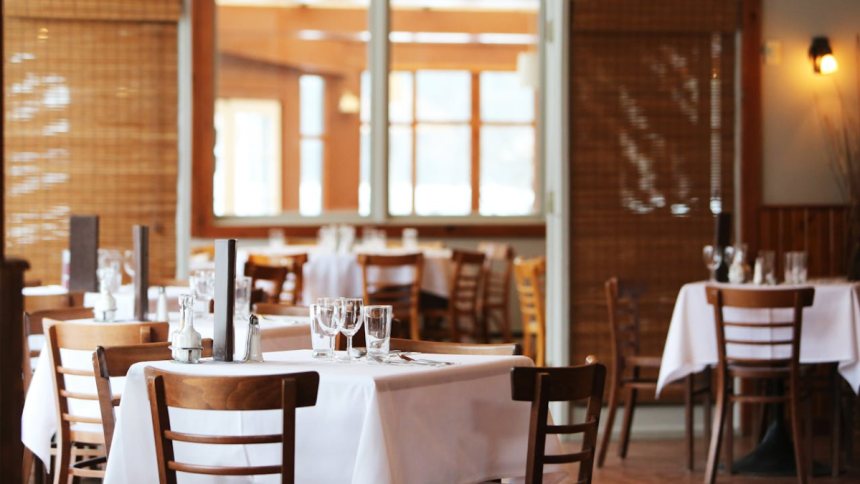Embarking on the journey of opening a restaurant is both exhilarating and challenging. Success in this competitive industry requires meticulous planning, a clear vision, and strategic execution. This guide provides a step-by-step approach to launching your restaurant, emphasizing the importance of branding, operational efficiency, and establishing a robust online presence.
1. Defining Your Restaurant Concept
The foundation of any successful restaurant is a well-defined concept. This encompasses the type of cuisine, service style, target demographic, and the overall ambiance you aim to create. Your concept should resonate with your personal passion and fill a gap in the market, offering something unique to potential patrons.
Key Considerations:
• Cuisine and Menu: Determine the type of food you’ll serve and ensure it aligns with your culinary expertise and market demand.
• Service Style: Decide between options like fine dining, casual dining, fast-casual, or quick service.
• Target Audience: Understand the preferences and expectations of your intended customer base.
• Ambiance: Design an atmosphere that complements your concept, from interior design to staff uniforms.
2. Crafting a Detailed Business Plan
A comprehensive business plan serves as your roadmap, detailing every aspect of your restaurant’s operation and strategy. It is also crucial when seeking financing from investors or banks.
Essential Components:
• Executive Summary: A brief overview of your restaurant concept and objectives.
• Market Analysis: Research on industry trends, target market, and competitive landscape.
• Marketing Strategy: Plans for promoting your restaurant to attract and retain customers.
• Operational Plan: Details on location, suppliers, staffing, and day-to-day operations.
• Financial Projections: Budget forecasts, funding requirements, and revenue projections.
3. Securing Financing
Determining the capital required to open and operate your restaurant is critical. Costs can vary widely based on location, size, and concept.
Financing Options:
• Personal Savings: Utilizing your own funds to finance the venture.
• Loans: Traditional bank loans or Small Business Administration (SBA) loans.
• Investors: Partnering with individuals or groups willing to invest in exchange for equity.
• Crowdfunding: Raising small amounts of money from a large number of people, typically via online platforms.
4. Selecting the Ideal Location
Location can significantly influence the success of your restaurant. Factors to consider include:
• Foot Traffic: Areas with high pedestrian activity can increase visibility.
• Accessibility: Ease of access for customers, including parking availability.
• Competition: Proximity to other restaurants and businesses.
• Demographics: Alignment with your target market’s residential or work areas.
5. Designing Your Brand Identity
A strong brand identity distinguishes your restaurant in a crowded market and fosters customer loyalty. This includes your restaurant’s name, logo, color scheme, and overall aesthetic.
Importance of Branding:
• Recognition: A distinctive brand makes your restaurant easily identifiable.
• Memorability: Consistent branding helps customers remember and return to your establishment.
• Emotional Connection: Effective branding can evoke positive emotions, enhancing customer experience.
Logo Design:
Your logo is a visual representation of your restaurant’s identity. It should be unique, scalable, and reflective of your concept. Collaborating with professional designers or utilizing platforms like BrandCrowd can assist in creating a logo that encapsulates your brand essence.
6. Implementing a Point-of-Sale (POS) System
An efficient POS system streamlines operations, manages transactions, and provides valuable insights into your business performance.
Benefits of a POS System:
• Order Accuracy: Reduces errors in order taking and processing.
• Inventory Management: Tracks stock levels and assists in inventory control.
• Sales Reporting: Provides data on sales trends, peak hours, and popular items.
• Employee Management: Monitors staff performance and schedules.
Choosing the Right POS System:
Selecting a POS system that aligns with your restaurant’s needs is crucial. The Gloria Food POS system offers a comprehensive solution tailored for the food service industry. It integrates online ordering, table reservations, and in-store sales, providing a seamless experience for both staff and customers.
7. Building an Online Presence
In today’s digital age, a robust online presence is vital for attracting and retaining customers. This includes having an intuitive, informative, and visually appealing website.
Key Features of a Restaurant Website:
• Menu Display: Showcase your offerings with enticing descriptions and images.
• Online Reservations: Allow customers to book tables directly from the website.
• Contact Information: Provide clear details on location, hours of operation, and contact methods.
• Mobile Optimization: Ensure the site is responsive and functions well on mobile devices.
Use a Website Builder:
Creating a professional website is made easier with tools like a restaurant website builder. These platforms offer customizable templates and features tailored specifically for the restaurant industry, enabling you to establish an online presence without extensive technical expertise.
8. Obtaining Licenses and Permits
Compliance with local regulations is mandatory. Required licenses and permits may include:
• Business License: Authorization to operate in your chosen location.
• Food Service License: Certification that your establishment meets health and safety standards.
• Liquor License: If you plan to serve alcohol, this permit is essential.
• Health Permits: Regular inspections to ensure sanitary conditions.
9. Hiring and Training Staff
Your staff plays a pivotal role in delivering the customer experience. Hiring individuals who align with your restaurant’s values and providing comprehensive training is essential.
Training Focus Areas:
• Customer Service: Emphasize the importance of hospitality and attentiveness.
• Menu Knowledge: Ensure staff can confidently discuss menu items and make recommendations.
• Operational Procedures: Train on the use of equipment, POS systems, and safety protocols.
10. Marketing and Promotion
Effective marketing generates awareness and draws customers to your restaurant.
Strategies:
• Social Media: Engage with potential customers on platforms like Instagram, Facebook, and Twitter.
• Local Partnerships: Collaborate with nearby businesses for cross-promotions.
• Events and Promotions: Host events or offer specials to attract patrons.
• Loyalty Programs: Reward repeat customers to encourage continued patronage.
11. Hosting a Soft Opening
Before the grand opening, consider hosting a soft opening to test operations and gather feedback. This allows you to identify and address any issues, refine service, and build anticipation within the community.
Lynn Martelli is an editor at Readability. She received her MFA in Creative Writing from Antioch University and has worked as an editor for over 10 years. Lynn has edited a wide variety of books, including fiction, non-fiction, memoirs, and more. In her free time, Lynn enjoys reading, writing, and spending time with her family and friends.















